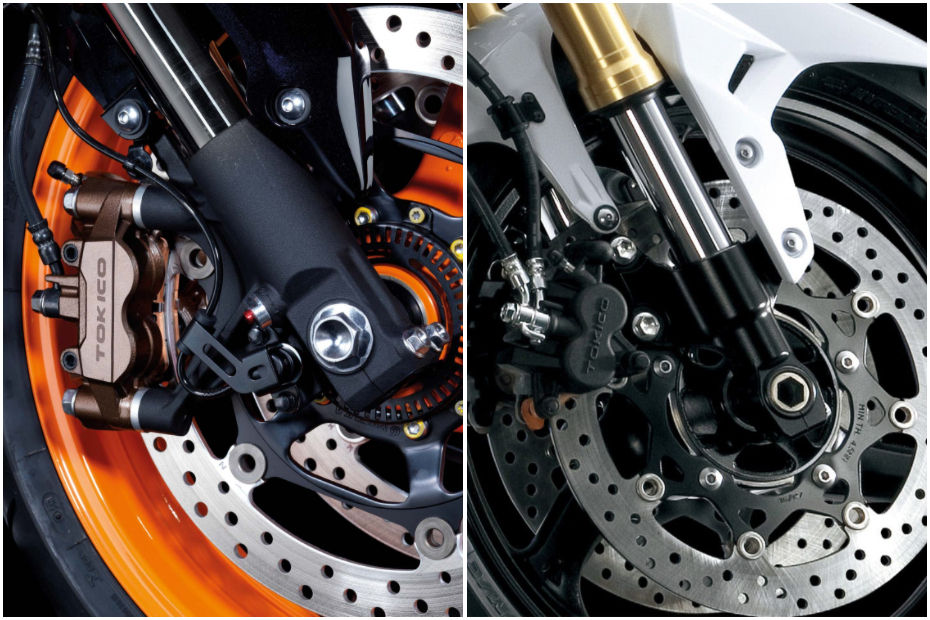Radial vs Axial Calipers: Differences Explained
Modified On Sep 8, 2019 10:18 AM By Gaurav Sadanand for KTM 390 Duke (2017-2023)
- 4959 Views
- Write a comment
How does the mounting position of calipers affect a bike’s braking? Is a radial caliper better than axial caliper? Here's what you need to know

Most budget-friendly motorcycles like the Bajaj CT110 make use of drum brakes at both ends in order to cut costs. However, more modern bikes such as the TVS Apache RTR 160 4V come equipped with a axial caliper (a.k.a. sliding caliper) up front. Head further up the pecking order and you’d notice radially mounted calipers (fixed calipers) and larger rotors slapped onto bikes like the KTM 200 Duke, Honda CB300R and the Bajaj Dominar 400, amongst others. What differentiates the two setups is the way they’re mounted onto the fork.
Mounting Position:
Axial calipers are clamped on the fork by bolts that run perpendicular to the disc, while radial calipers are mounted directly onto an upside down fork and held in position by bolts that are parallel to the disc brake or the axis of the bike. Essentially, the position of the mounting bolts determines if the brakes are radial or axial. And much like forks, rigidity is crucial when it comes to braking setups.
Advantages of radial calipers:

Like most two-wheeler tech, radial-mounted calipers originate from the race track. The positioning of radially mounted calipers allows for more rigidity or less torsional flex (lateral movement) which translates to better feel through the lever. In order words, radial calipers are fastened at both ends for better rigidity which offers less caliper flex while its four-piston setup (two on either side) pushes in evenly on the brake pads for superior pad-to-disc contact under maximum braking.
Disadvantages of radial calipers:
Radial or fixed calipers are usually seen on fast bikes with an upside fork. Naturally, they are a lot more expensive to manufacturer and eat through consumables (brake pads) faster than axial calipers.
Advantages of axial or sliding calipers:

Sliding calipers are cheaper to manufacture and offer almost the same braking performance as radial calipers in day-to-day use. It’s a different story on the track though where braking inputs are of utmost importance.
Disadvantages of axial or sliding calipers:
Perpendicular mounting bolts on a sliding caliper leads to more torsional flex during heavy braking. This leads to less feel and feedback through the levers. Moreover, braking force is only applied from one end thanks to its twin piston setup which leads to uneven wear and disc-to-pad contact.
All said and done, the way your bike brakes boils down to a number of factors, and the way calipers are mounted is just one piece of the pie. Other aspects include master cylinders, braking lines, brake pads, tyres, rotor size, rotor type and much more! Riders who use their bikes for city commutes wouldn't find any difference between radial or axial calipers.
